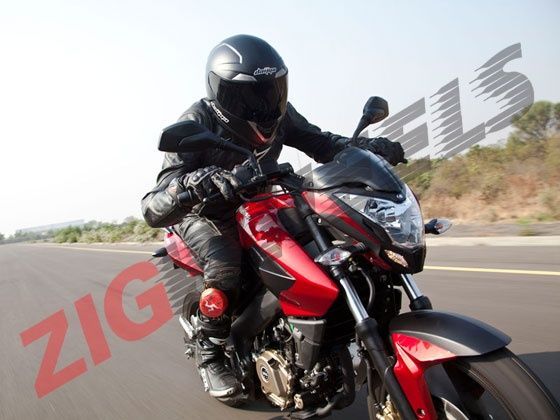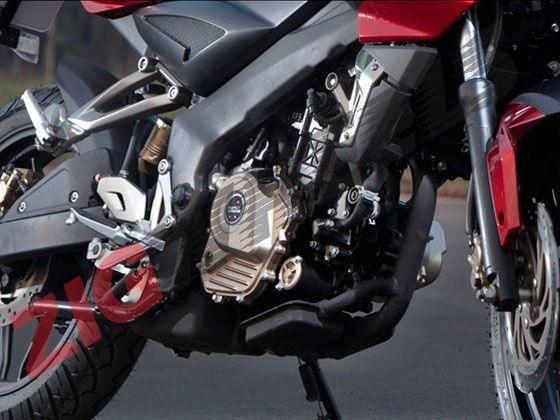The new Bajaj
Pulsar 200NS uses a 199.5 cc SOHC - 4V engine that produces 23.52PS on
tap at 9500 rpm and makes 18.3Nm of torque at 8000 rpm. The engine is
liquid cooled, a first for a homegrown machine and one which is compact,
high tech, has all the robustness of design and build to benefit from
the new combustion technology perfected with the three-spark plug head

How many times has it been said that the heart of a Ferrari
is its engine and just as many times it has been mentioned that if one
had to denote the signature Ferrari engine it had to be a V12. Maybe
this sort of a geneology could also be applied to the Pulsar because the
DNA of this brand is its engine technology – homespun tech that has
proved itself in the art of making power and delivering efficiency
without being harmful to the environment. The DTSi twin spark digital
ignition technology came up through the simple expedient which has
remained a Joseph Abraham hallmark to this very day: initiate complete
and total combustion as quickly as possible so that no unburnt fuel goes
out as harmful tailpipe effluents while power and torque are high
without the need to drink more fuel. If that’s not all the obvious
benefits to this approach mean not much is needed by way of exhaust
after treatment and also the fact that the engine operates at a higher
efficiency always.
This is the sort of approach that is carried on in the new motor as well but one that has now been taken to newer heights with the employment of what is indeed the world’s first ever three-spark plug head on a single cylinder motorcycle engine! Again let us not be so simplistic as that in just sticking up three sparklers and hoping it will take care of everything else. There is method in the madness and also another way as to the differentiation of the design and character that Joseph and his team have adopted when configuring the engines for the KTM Duke 200 and the Pulsar 200 NS. While the former is a double overhead cam unit operating four valves, the latter is also a four-valve head but a single overhead cam unit actuates these four valves. The engine is liquid cooled, a first for a homegrown machine and one which is compact, high tech, has all the robustness of design and build to benefit from the new combustion technology perfected with the three-spark plug head.

First off let us clearly outline the fact that the bottom end and the reciprocating mass comprising of crankshaft, connecting rod and piston of both the Duke 200 and the Pulsar 200 NS are common. The bore and stroke of both bikes measures 72mm x 49mm making for a 199.5cc swept volume. Apart from that, everything is different and the top end is key to the new Pulsar mill. What Bajaj learnt from the DTSi success was that the people didn’t know much what it stood for but knew it helped deliver power and efficiency so in the new Pulsar 200 NS they decided to skip the techno babble and go straight to the point and term the new top end as the one encompassing the Triple Spark technology.
Again unlike the Duke 200 which runs fuel injection with a large 38mm
venture throttle body, Joseph adopted a 33mm venture Ucal carburetor
which helps give consistent fuel metering and also with the superbly
configured pent roof combustion chamber and slight squish bands designed
in, the Triple Spark layout employs a central master plug and two slave
plugs on either side. A completely independent mapping system is
wrought into the ignition that works on its own using Bajaj Auto’s very
own proprietary algorithms to help the flame front propagate completely
all over the combustion chamber. Nothing has been left to chance and
while earlier Pulsars with the DTSi tech did produce a pronounced engine
knock on the top end (happens always when rapid combusting is called
for), this time the combustion is even more rapid but the knock is all
but eliminated thanks to the water jacket helping to muffle the sound.
Go back to our Special Coverage. Also read the First Ride of the new Bajaj Pulsar 200NS here.
For Wheels 'n' Gadgets Updates, follow us on Twitter or join us on Facebook



 Posted in:
Posted in: 

